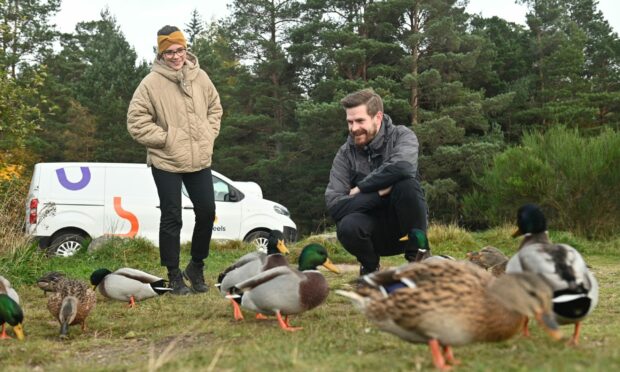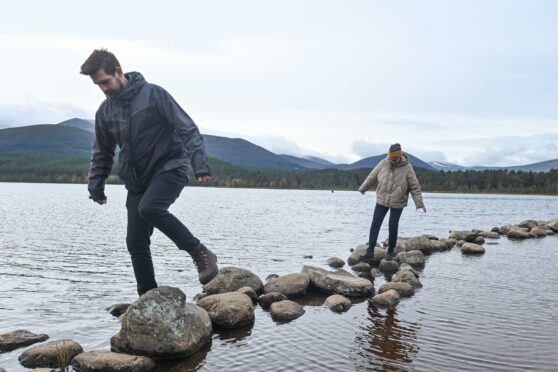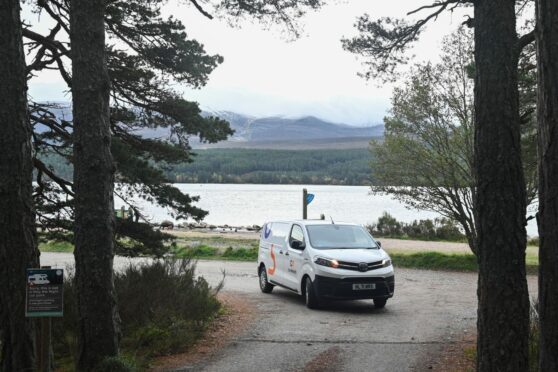After three days of driving our electric van we foolishly thought we had finally got a good grasp on the reality of battery-powered travel in rural Scotland.
After all, we had made it from from Aberdeen, to John O’Groats and down south to Aviemore. All on our way to COP26 at Glasgow.
How wrong we were.
When we were initially planning out our journey, we thought the very north of Scotland would be the most difficult. That’s because of the few chargers in the region and the large distances between them.
But compared to the Highlands, northern Aberdeenshire is miles behind in the electric vehicle revolution.
No sleep till Peterhead
We departed Aviemore on full charge. We topped up while wolfing down breakfast in Grantown. Before pushing through to our final destination of the day: Peterhead.
We had an appointment to interview fishermen about the impact of climate change on the north-east’s fishing industry.
Our first plan had been to charge up from a rapid charging unit in Keith. However when we arrived, we found it was broken. The other rapid unit was occupied.
Not ideal when the interview was rapidly drawing closer.
More Aberdeenshire chargers woes
Not to be disheartened, we kept our van in eco mode. We carried on along the A96 to Huntly. Only to find that, yet again, the rapid charger was also not working.
There, we met with a family from Dunbar travelling in an electric car. They looked more than a bit frustrated with the Aberdeenshire chargers.
They were on the phone asking if the charging point’s operators could fix it. It emerged they could not. The poor family had just 11 miles worth of juice left.
When we arrived at the broken charger in Huntly, we met with a family in an EV who were similarly disappointent to find it busted. Especially as they had just 11 miles left in the tank… #ClimateRoadTrip pic.twitter.com/MPv9OTZxTh
— Kieran Beattie (@KNBeattie) October 23, 2021
We asked mum and dad Laura and Steve if they think anything positive will come out of the upcoming COP26 climate change conference. We wanted to know what they think about how we can best adapt to climate change.
Laura told us that she was “really hopeful” about the talks. She explained how electric vehicles are just one piece of the puzzle.
She said: “There’s a whole range of things around active travel, and getting us to travel around in different ways, not just in cars.”
Steve said: “Another thing we’re looking at is our home. So air source heat pumps and the like. I think there’s a big push to move away from fossil fuels.
“There’s a kind of culture change needed. That we’ll just have to try and do things ourselves as well as looking at leadership. There’s behavioural change that we need to address.”
White Lightning strikes twice
With only half a tank of electricity left, and none of the rapid chargers we’d need to get to Peterhead remotely on time on our original route, we had to divert to Inverurie. We arrived with just a quarter of our battery remaining.
After 45 minutes on a rapid charger in the town, we were off. (Plus a few pleading calls to fishermen to continue to kindly wait for us.)
We arrived at the harbour in the Blue Toon two hours late.
Thankfully our interviewees were more than happy to wait for us. But had they needed to get out to sea… We would have definitely been in trouble.
And our trip to Peterhead marks the end of the Press and Journal team’s stint in the electric vehicle, which Pip and I have decided to officially name White Lightning, thanks to a recommendation from a reader.
She’s served us well through thick and thin, and from tomorrow she’ll continue her journey south with our colleagues from our sister publication The Courier. Journalists Scott Milne and Aileen Robertson will take her to Glasgow for the start of COP26.
You can follow their adventures on social media, by searching for our hashtag #ClimateRoadTrip. Hopefully they don’t have the same kind of chargers problem we found in Aberdeenshire.
Bon voyage, White Lightning!


